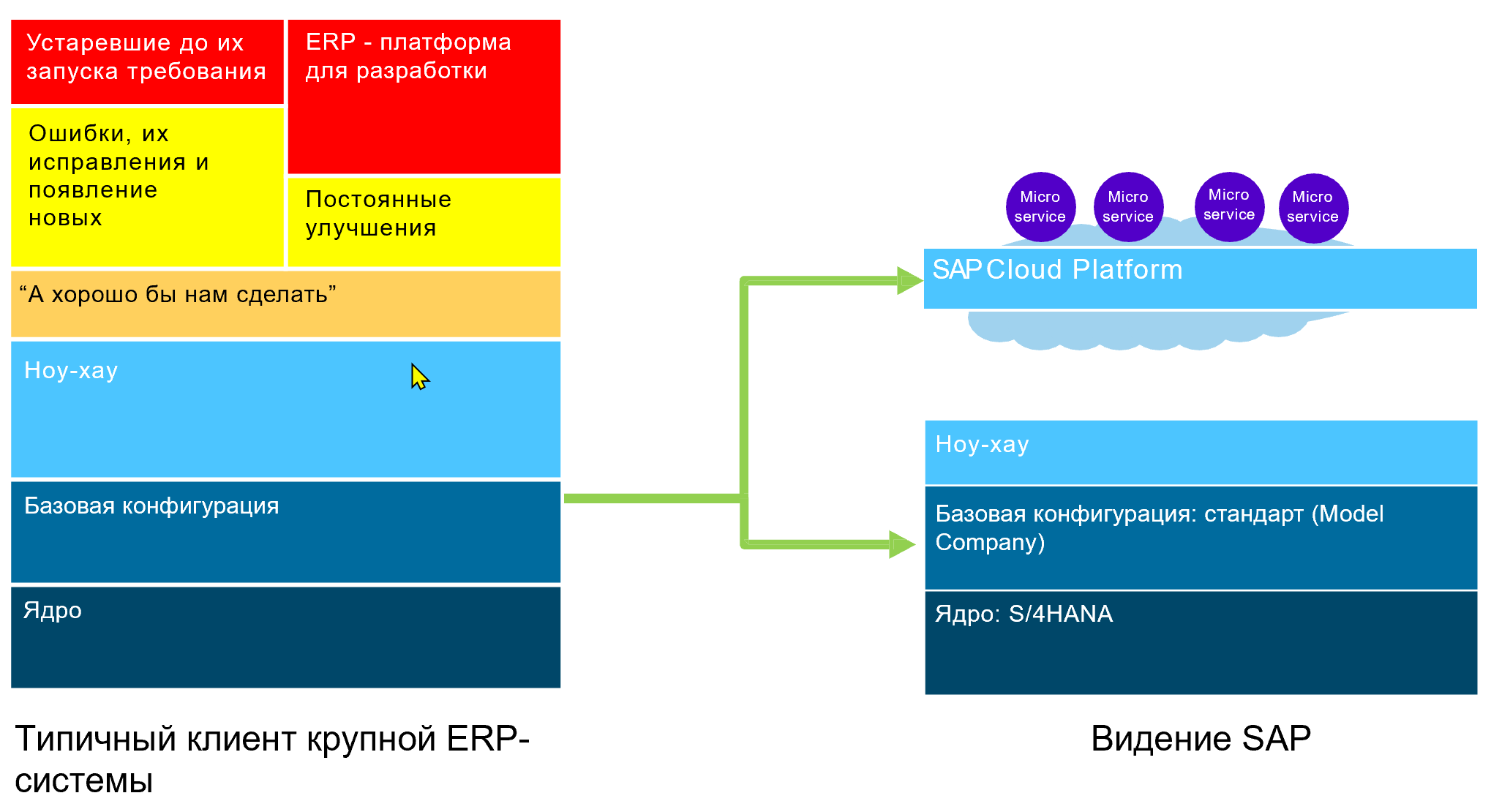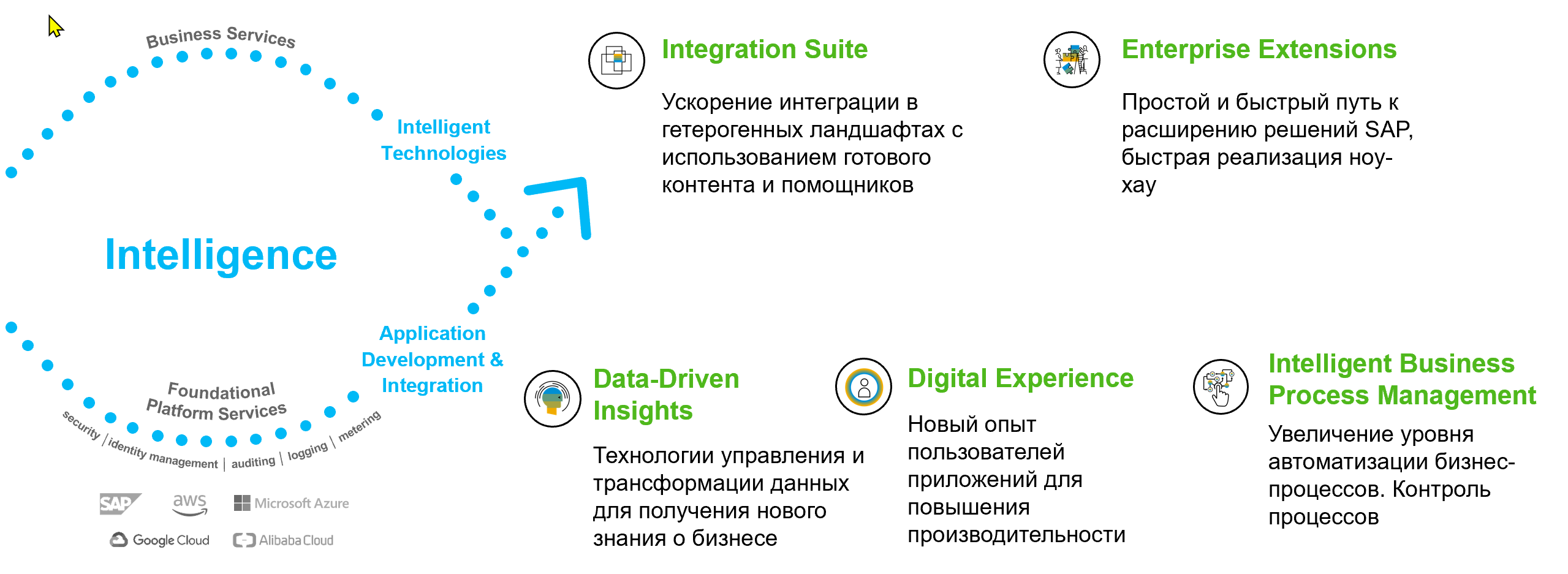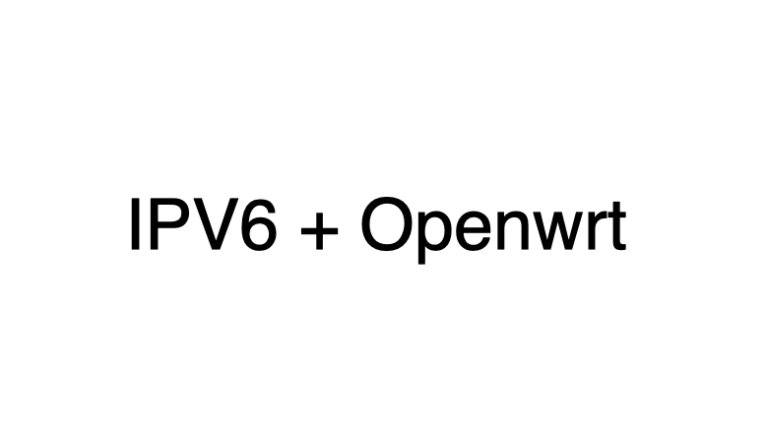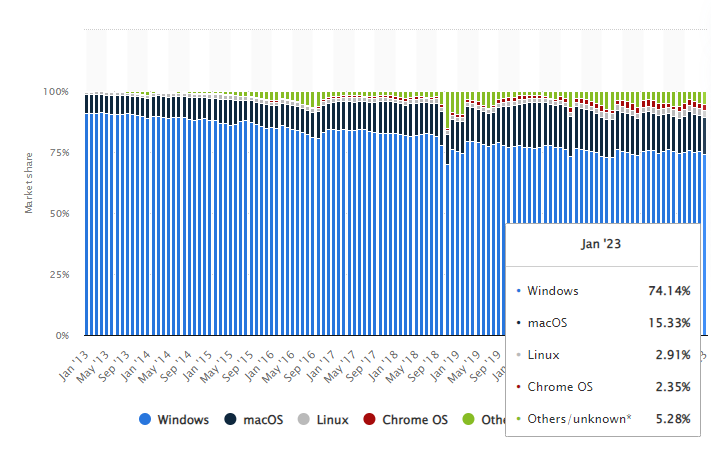How to create an extension for the digital core using the SAP Cloud Platform
SCP started out as a classic PaaS, but over the years has evolved into a business technology platform. It allows customers, when implementing digital solutions, to focus more on managerial and production tasks than on implementing a specific IT technology. SCP contains dozens of business and technological services, building blocks inside the platform. The client application may include some of these blocks, while the developer does not need to delve into the intricacies of a specific technical implementation.
SCP can solve a number of problems. One of the important issues is the expansion of various applications of the enterprise’s digital core, such as SAP S / 4HANA or SAP ERP, SAP C / 4HANA, SAP SuccessFactors, SAP Ariba and others. Using the platform, you can add the functionality of cloud and on-premise solutions, integrate SAP solutions with each other and with third-party systems, test new technologies and test business hypotheses.

Picture 1.
One of the standard problems of large implementations of business systems is the emergence of the so-called “technical debt” (Figure 1). This process is relevant for all vendors – sooner or later, the main system that manages the business turns into a development platform. Current developments are based on past developments and technical debt is growing and even requires interest payments, i.e. support for the functionality that was once written “on my knees” with the words “there will be time, we will do everything right.” But there is never time. Moreover, the idea of ERP as a development platform does not correlate well with the idea of rapid innovation, research, and experimentation.
That is why our company considers the SAP Cloud Platform as the recommended side-by-side platform for expanding core business solutions. SCP, designed to develop microservice applications, allows you to use almost any programming language, serverless computing, and containers. The latest versions of SAP applications have an event-driven architecture, and integrating them into the SCP environment is becoming a simple task.
Of course, the SAP Cloud Platform and, in general, side-by-side extensions are not the only possible way to modify the basic SAP applications, those that we call the digital core. Enterprises that have embarked on this path are gaining ample opportunity to develop new technologies, business models, products, and all that is called “innovation.” SCP is the technological basis for transforming an IT organization according to a multimodal scheme, translating it onto the rails of an agile approach in the broadest sense of the word, both in the development field and in business processes (Figure 2).

Figure 2
SAP strongly welcomes and supports this approach. Murphy Oil Corporation, an oil producer, has become one of the winners of the annual SAP Innovation Awards in 2019. The project team not only expanded the functionality of the company’s core systems, such as SAP ERP, but also integrated many innovative technologies, such as machine learning and IoT, developed mobile interfaces and integrated external services into the kernel, for example, a telematics service provider for vehicle monitoring .
Of course, all the heterogeneous technologies integrated within the SAP Cloud Platform have an SAP body kit. A developer who wants to include IoT or blockchain specifics in his application does not need to delve into the intricacies of implementing these specific technologies. In Figure 3, you can see that the platform and the SDKs provided with it allow you to connect to the SAP system using a small amount of code and settings, take the data in the required format from it, authenticate using the SAP Identity Provider, and use Principal Propagation in the SAP environment and use other features specific to the SAP environment.

Figure 3.
Worldwide experience with the use of SCP shows that customers have a similar perception of its purpose. Most often, the platform is used to expand standard SAP applications. A flexible licensing model allows you to try certain modern technologies and test them for applicability in a particular business, without incurring significant and irrevocable capital costs.
SCP Services
SCP Services logically can be divided into groups according to the tasks to be solved, as shown in Figure 4.

Figure 4.
Integration suite
One of the most frequently implemented tasks is the integration of SAP solutions among themselves or with solutions of other manufacturers. A separate group of SAP services is dedicated to solutions for the integration of processes; they are most often purchased together with cloud solutions. These are services such as Cloud Integration, Enterprise Messaging, or API Management. The services of this group allow you to collect microservice applications from blocks that transfer information from one business system to another.
Enterprise extensions
This group of services includes everything that is dedicated to development. This includes cloud tools such as WebIDE or Business Application Studio, a variety of support tools for use in Localization Hub or Data Quality Service applications, and finally, an ABAP development support service. SCP, built on the Cloud Foundry containerization platform, allows the developer to use almost any programming language. To take full advantage of the platform, SAP offers a development methodology optimized for the microservice architecture of the SAP Cloud Application Programming Model. The development also supports the CI / CD approach using standard modern tools. In addition, the company also provides ready-to-use Jenkins pipelines implemented as Docker containers and optimized for SAP development.
Data driven insights
One of the advantages of the cloud platform is the ability to conduct technological experiments without large capital investments. This is especially important when we talk about testing business hypotheses in the field of data processing. Here, SAP has a number of tools: data storage in the flexible multi-level, multi-temperature storage of SAP HANA Cloud, the organization of convenient data marts for business users in the cloud solution Data Warehouse Cloud, a platform for Data Science SAP Data Intelligence. All these solutions require significant hardware resources and high installation labor. Ready-made services in the cloud can significantly reduce the time spent on the development and commissioning of innovative business know-how. For example, PwC uses the SAP Data Warehouse Cloud to jointly present data from various systems in their offices in more than 150 countries. DWH does not replace “traditional” data warehouses, but gives business users the ability to easily access consolidated data from various sources around the globe. Using the built-in SAP Analytics Cloud allows users to quickly test new ideas and hypotheses, and, with little or no involvement of IT-services.
Intelligent Business Process Management
In a rapidly changing world, a company wins that can quickly tailor its business processes to a changing environment. The set of services of this group allows you to use special tools to describe the logic of business processes, in a convenient, self-documented form, intended for modification by a business consultant, and not by a software developer. The basic services in this group are Cloud Workflow and Business Rules, in fact, BPM in the cloud. Here you can also find the Process Visibility service, which allows you to analyze business processes based on Workflow, as well as event-driven SAP applications. This group also includes innovative RPA and CAI services designed for robotic routine operations and creating chat bots that implement new user interaction interfaces. Delivery Hero, the largest food delivery network in the world, for 8 years has brought the number of processed orders to 1 million per day, which is achieved by working with several hundred thousand restaurants around the world. Of course, such growth should be supported by a huge number of investment projects in various aspects of the business. Using SAP BPM (workflow) Delivery Hero built an extremely effective model for managing internal investments, reducing the time for obtaining permission to allocate capital from 20 days to 2x.
In conclusion, it is worth noting that SAP is now positioning SCP as a platform for business, is actively using open source technologies, and itself takes part in their development. Moreover, the vendor offers its customers a multi-cloud model, in which SCP is located on the capacities of leading IaaS providers, such as MS Azure, AWS, GCP, Alibaba Cloud, as well as in its own data centers. The customer has the right to independently choose which of the many data centers around the world, including in Russia, to place his services and applications. You can even all at once. SAP welcomes the customer’s use of the services provided by the hyperscaler, and allows you to create innovative solutions using your own and third-party technologies. Thus, the variety of services provided by the platform can be easily increased. In the following articles, we will continue to talk about the capabilities of the SAP Cloud Platform for expanding the digital core and provide some interesting examples of how our customers do it. To be continued.
Anton Nozdrin, Senior Business Solutions Architect, SAP CIS



